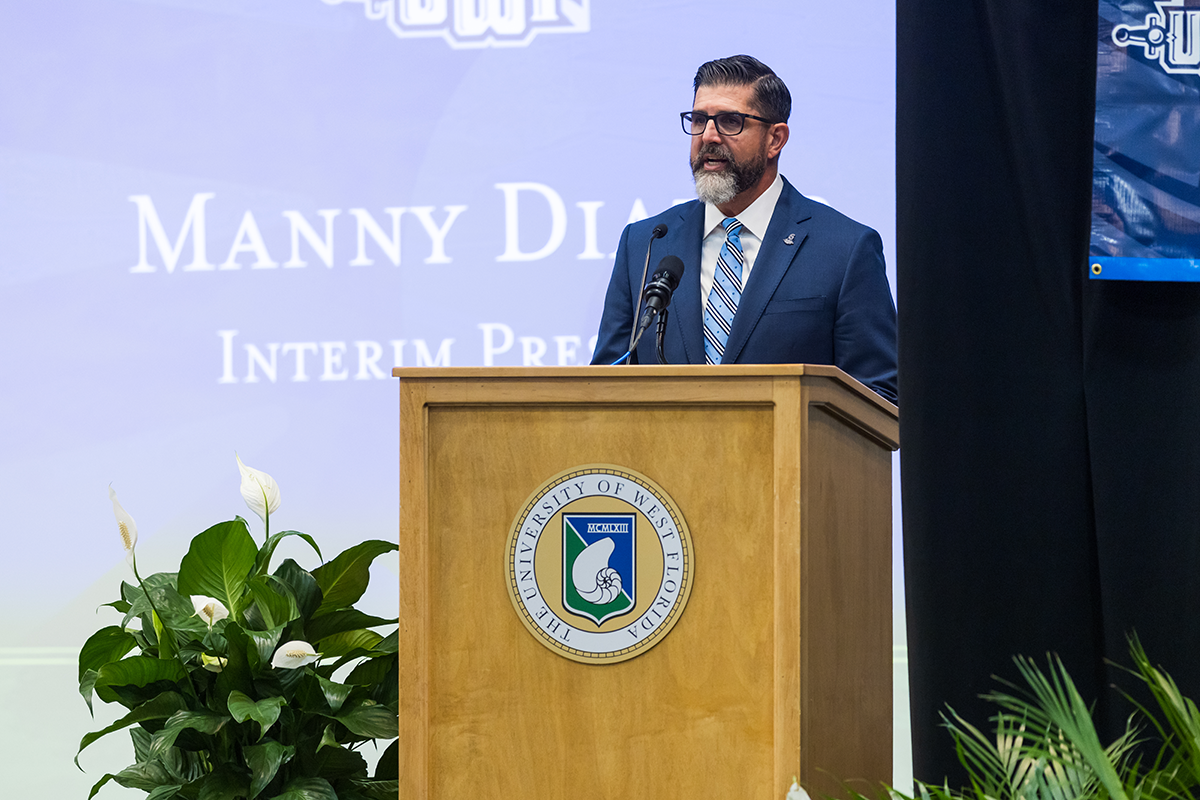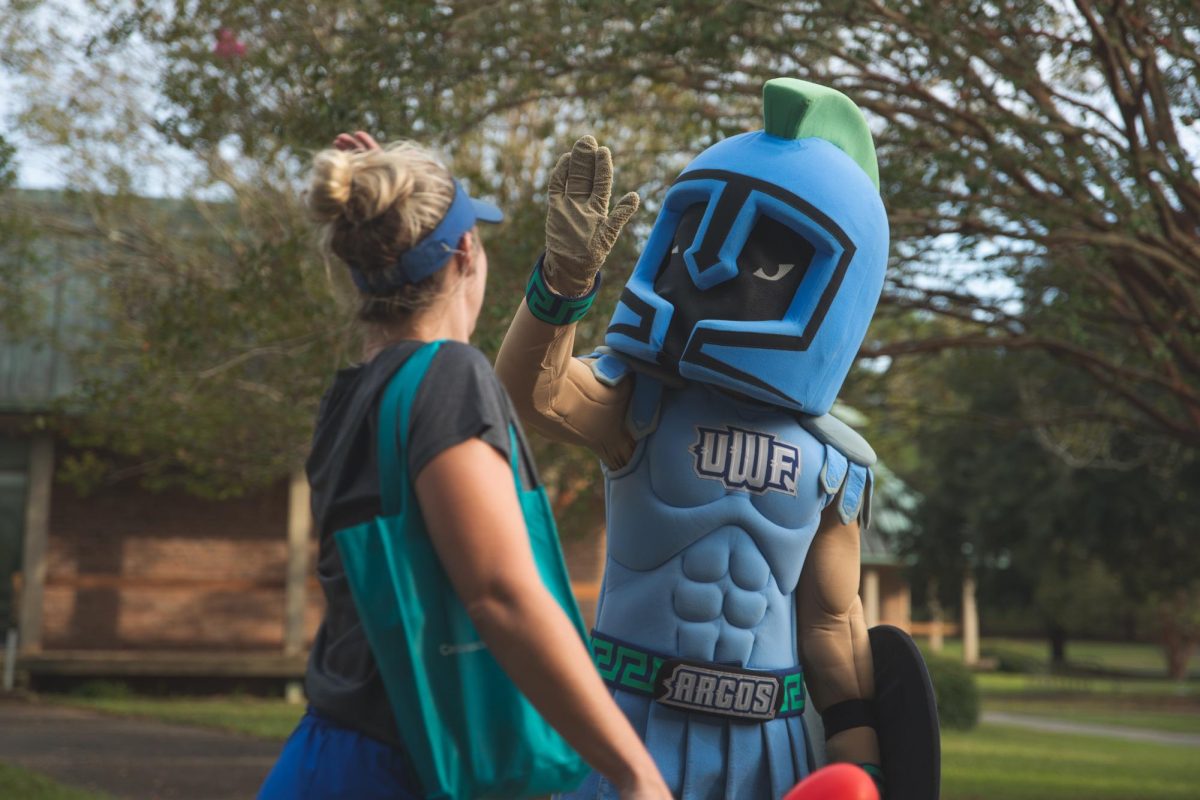Do you know the name of the first student killed at Columbine High School on April 20, 1999?
Without googling, do you know her name? Where she was? Do you know any names of those who passed away that day?
Now, do you know the names of the gunmen who murdered them?
Most of the time – yes – you will know.
And for the sake of Rachel Scott, the girl who was shot first for making the mistake of simply eating lunch outside, and all of the rest, we will not name the shooters.
Twenty-five years ago, on April 20, 1999, we, as the media, wrote a script: discover the blood and guts on a campus, misreport it, rectify it with witness statements (who are usually covered in blood, traumatized), find out who the perpetrator was, report the numbers, say thoughts and prayers, and the rest becomes history.
The gunmen quickly became the focus – the perpetrator’s faces and names everywhere. Their motives, inspirations, and goals became the forefront; “lone wolves,”; “bullied,”; “isolated.” An inaccurate painting of the Columbine shooters was created over twenty-five years ago and continues today.
The boys were not bullied – they were bullies. The boys were not “lone wolves” – they were popular in their social circles, and one of them even had many friends within the jock crowd that he supposedly despised. The boys weren’t depressed because they lacked girlfriends – each had one they were enamored with.
What is true is that the boys were both sensing a type of disenfranchisement. One of them (let’s refer to him as Shooter H) felt immense rage and entitlement towards his peers and referred to himself as a Nazi. Within his manifestos, Shooter H revealed that his disgust ranged from anyone to everyone – if you disagreed with his sentiment that only “the fittest is to survive, ” you were part of the problem and must be killed. He felt deprived of his right to power and control as a high school student.
The other killer, “Shooter K,“ was linked to his massive depressive moods that swamped his everyday life. Almost the opposite of Shooter H, some even refer to Shooter K as a “sidekick.“ He was a follower; he was more submissive to his counterpart and wrote extensively on how suicidal he was. More often than not, you would find self-destructive notes within his school journals. He felt he was deprived of the joy and happiness that he saw within his fellow peers.
And together, the two sourced guns illegally. Together, they built bombs and made their own “Basement Tapes“ – audiovisual manifestos detailing their plans.
Their ultimate goal was to create a spectacle to go out with a bang.
Because Columbine was not designed to be a shooting – it was intended to be a bombing. That’s the major inconsistency in the legacy of the event. The whole point of Shooter H & K planning their massacre was to get on television and show the world who was powerful. Somewhere within Shooter H’s notes, he mentioned that he hoped others would “join him in infamy.”
And that is what’s happened.
In all of these inconsistencies and poor reporting, the absolute truth of Columbine has been twisted beyond recognition. In the media, these two men became the forefront of the investigation, and their intentions and actions were glorified. From the beginning, the focus was drawn from the victims and their lives and placed on those who had taken it from them.
Even when victims were discussed, they were heralded as “martyrs,“ and graphic images of their bodies were shown (see Daniel Rohrbrough and Rachel Scott). Some of their photos even made it to the front of newspapers. Pictures of those running from the school won awards – most of the time, including those in tears or blood-soaked.
In 2014, the Times released a feature magazine focused on the Columbine Massacre. On the cover were Shooter H & K—right in the center; their photos were large and in color. The rest of the victims were small in portrait and black and white—the top row partially obscured by the Times logo. In big, bold letters, it says: “THE MONSTERS NEXT DOOR: Why did they do it?”
Within the next few months, dozens of school shootings occurred, primarily by students. Most of the shooters drew inspiration from Shooter H and Shooter K.
In 2018, another teenage boy researched Columbine and planned out his massacre for Marjory Stoneman Douglas High School in Parkland, Florida. Undoubtedly, he saw this magazine when it was released; how could he not? It was everywhere. His goal was to outclass the Columbine shooters – he wanted the attention they received in the media.
He succeeded – he had outclassed them by two victims. The media immediately heralded this boy, name, age, and portrait in all, as “the deadliest school shooter in history”; “the worst since Columbine.” Photos of crying kids soaked in blood were on the front of newspapers and news websites.
Since then, many school shootings have occurred, each more disturbing than the last. On different social media platforms, there are groups dedicated to worshipping the Parkland shooter, and even Shooter H & K. Some even say that they want to make the people who hate them pay.
Some even say that they want to commit genocide themselves because of these boys. Copy-cats, if you will.
And that is the Columbine Effect.
“Social Contagion“ is the phrase of the day.
The idea of imitation through the impact of a famous social event dates back to the ancient Greeks with Plato.
The term “Social Contagion“ was officially coined by American sociologist Herbert Blumer in the late 1800s in his essay detailing collective behavior and the dancing plague of middle-aged France.
Over time, social contagion has spread to a multitude of subjects, from celebrity suicides, serial killers, mass hysteria events, and, of course – mass shooters. Journalists over the years have had rules, regulations, and ethics surrounding how to communicate most of these events with enough caution not to spread the “contagion” further – especially surrounding celebrity suicides – but why not for mass shootings?
Let’s go back to the Times cover. The killers are the only two in color and the largest in the frame, while the victims’ portraits are miniature and deprived of saturation. Focus is placed mainly on Shooter H & K – why? One could argue it’s because the feature is based solely on the killers and less on the victims, but why would anyone, let alone an infamous publishing company, sensationalize two killers on the 15th anniversary of their killing of 13 people?
The public’s perception of mass killers is one of mystery.
They’re intriguing – I’m certainly not blameless. My favorite pastime is watching True Crime documentaries.
But something needs to be said about the ethics of True Crime as a whole, especially when it is represented by the media.
When Columbine occurred, hundreds of news outlets essentially victimized the murderers; they were bad boys and loners. Nobody knows why they did it, and so they were mythicized by almost everyone; the infamous “Basement Tapes“ pulled further intrigue. To most, they were bullied youths who couldn’t take anymore and snapped.
But, as journalist and author of “Columbine,” Dave Cullen puts it: “Boys don’t snap – they smolder.”
So, what causes them to smolder? School shootings are certainly not new, and they continue to raise the same questions every time one breaks the news:
- Can gun control stop them?
- What is the deal with mental health?
- Was the killer interested in Columbine?
You can’t argue that guns aren’t a massive deal here – they’re usually the primary weapon used in massacres like these. The problem is that they’re easily accessible. That’s a given, and the importance of gun regulation is not to be argued when trying to prevent these things from happening again.
Mental health is another massive player here, though it’s more complicated than one might think. As aforementioned, disenfranchisement is usually the primary motivator, as shooters (usually young white men) mainly feel that something is owed to them, whether it be womanly love, sexual desires, right to power, happiness, and more. There is usually some blame in conjunction with pre-existing mental crises, like depression and bipolar disorder.
But then there’s that final question. Columbine is always brought up – always compared to. It’s the primary motivator in the Columbine Effect. What happens when an individual who is already disenfranchised, usually depressed and enraged at society, sees that the media gave Shooter H & K and those who came after them so much attention? People on social media who idolize them?
What about the aftermath of the attacks – reporting of the devastation caused by these individuals and the anguish they’ve caused for those surrounding the victims? The destruction of a community and the literal destruction of humans in the form of gory images spread like wildfire. Those same images are still available to view in 2024 with a quick Google search.
What happens when that individual, who already feels deprived of attention, wants to seek it out with the weapons that came so quickly to them? According to the FBI Behavioral Analysis Unit, 90% of mass/school shooters show suicidal ideation before the attack. This means that the attack itself is a means to an end – so what happens when all of this is combined into one angry individual?
It’s simple, you know it, and we’ve seen it before. And we’ll see it again, and again, and again.
Point blank, the myth of Columbine has created a script for the media to follow, but even more importantly, a script for those who want to imitate the shooters. A guide to committing mass murder, and a guide to getting the most press coverage. They want to do bigger – better than Shooter H & K.
We, as the media, fall for it every time. Shooter H and Shooter K created those basement tapes for a reason. They wanted us to see them and follow their guide on how to make bombs, purchase weapons, and plan for a mass attack. They held our hands as they walked us through their ideologies through blog posts, giving us “ammunition“ for our planning.
Those who reported on that between April 1999 and January 2000 fell right for it. The Basement Tapes were a massive form of debate, most leaked online. Videos of the shooters “acting cool“ were spread on forums, and their letters to the world were printed. We did exactly what they wanted us to do, and twenty-five years later, we’re still in the aftershocks of it.
In an investigation by Pierre Thomas of ABC News in 2015, they discovered that seventeen school attacks and thirty-seven serious threats have been linked directly to Columbine since April 20, 1999. Those numbers have almost doubled as of March 2024.
Psychologist Dr. Peter Langman has compiled a list of shooters and compared them based on their inspiration from Columbine. The chart is a disturbing web of hundreds of lines that connect from Shooters H & K down to a shooting in Brazil in 2019. Some of the webs even branch off from each other, the shooters drawing inspiration from other shooters who drew inspiration from Columbine.
Some of the most infamous shootings that have happened in the last decades – Sandy Hook Elementary, Robb Elementary, Marjory Stoneman Douglas, and Virginia Tech – all had shooters interested, or even obsessed, with the Columbine shooters.
How does that work?
Well, according to criminal psychologists Jillian Peterson and James Densley, “Before Columbine, there was no script for how school shooters should behave, dress, and speak.”
“Columbine created ‘common knowledge,‘ the foundation of coordination in the absence of a standardized playbook.”
So, how do we stop this epidemic?
First, there has to be a general profile. This is easily found in the data compiled by The Violence Project, headed by Dr. Jillian Peterson. They analyzed 134 school shootings since 1999.
81% of school shooters are white. 91% of school shooters are “insiders,” – meaning that they are either enrolled or have been enrolled in the school they attack. Mental illness is a motive but is not the only one – it’s also hate and fame-seeking. Mental health (as mentioned previously) is complicated, as only 25-30% of school shooters experienced psychotic symptoms before attacks, but 87% of them were in “a noticeable crisis“ before their crimes.
Different signs of potential planning include but are not limited to:
- Increased agitation
- Abusive behavior
- Isolation
- Derealization
- Depressed mood
- Mood swings
- Inability to perform daily tasks
- Paranoia
In addition to this, 80% of them are suicidal before the attack, and 78% of them will leak their plans as an almost “suicide note“ before the shooting. They will also usually have a small record of school discipline, violence, and a history of being bullied or isolated from their peers.
Despite this data, I want to note that this is not a concrete, 100% “here is your shooter“ guide. This is what was found through examination to be the main profile of a school shooter, but each of them is different and has different factors surrounding their events.
So, now that we have a general profile, how do we use this to prevent social contagion?
A significant way is to start at the root of the issue – gun violence. Passing regulatory legislation for gun ownership would be an essential stepping-stone in preventing further school shootings. Another key is introducing comfort and community in schools and providing counseling and care to those exhibiting warning signs.
According to Dr. Peterson, “There are these things at the institutional level. [So] things like anonymous reporting systems, crisis response teams, training in crisis intervention and suicide prevention, safe storage campaigns, or teaching media literacy and social-emotional learning. There are things we really can be doing that the data would say could make a difference.“
But that’s surface-level regulatory and academic prevention. They are necessary, but what’s the main problem with the media? Again, is it social contagion?
Simple: stop putting the shooters’ faces everywhere.
Stop saying their names and referring to them as “monsters with a large body count.” The more emphasis on their crimes and the salience of the destruction they’ve caused, the more people like the Sandy Hook shooter will draw inspiration. Again, it’s attention-seeking behaviors, so the cycle will repeat when attention is given to those individuals.
It’s the Columbine Effect. The goal is spectacle, and making the people who cause the spectacle infamous only perpetuates the problem. However, a group on the rise is working with the media to prevent these things from happening again.
The No Notoriety Campaign is a group created by Caren and Tom Teves, the parents of Alex Teves, who was killed in the Aurora, Colorado “Batman“ shooting of 2012. Their main goal is to “reduce rampage acts of mass violence due to media-inspired fame.”
They appeal to the journalistic principle of “minimize harm“—carefully balancing the public’s right to information while also preventing further potential harm. In essence, they want to ensure that the public can know the shooter’s name, face, and motivation, but only in small quantities, to minimize the impact of focusing on the shooter.
To do so, NNC suggests “limiting the name to once per piece as a reference point, never in the headlines, and no photo above the fold.”.”
They also focus on “elevating the names and likenesses of all victims killed or injured to send the message that their lives are more important than the killer’s actions.”
These are suggestions they’ve made from a long list, but each is incredibly important for the future of journalism. Our responsibility – the media – is to provide an accurate and just portrayal of events while maintaining courage and maturity during the coverage.
By following guides like these, we could prevent more copy-cats from seeing headlines and sparking inspiration from those who didn’t deserve “fame“ to begin with.
Rachel Scott was killed on April 20, 1999, around noon. She was one of 12 that day that perished. During “A Lunch,” Rachel sat outside on the grass to enjoy lunch with her friend, Richard Castaldo, when she was murdered.
Her body was left outside for a total of twenty-four hours before the coroner retrieved her.
Herself and Daniel Rohrbough, who was also left outside, had photos taken of their remains for hours. Daniel’s father, Brian, discovered his son was dead the following morning not by police or by family, but by the newspaper – Daniel’s death photo had been on the cover of The Rocky Mountain News.
Photos of the other victims, like Cassie Bernall, were spread around – but not as much as the photos of students leaving the school covered in blood. When Cassie was shared, it was for her to act as a martyr, not as an actual victim. The media surrounding Littleton, Colorado, didn’t care much about it.
What they did care about, and what the rest of the world’s media would care about for years, were Shooter H and Shooter K. The idea of blood-and-guts journalism is a debate for another day – but it’s certainly a problem, especially in school shooting contexts.
The focus on Shooters H&K remained for years, and they’re still somewhat at the forefront of the Columbine massacre. They’re almost victimized in a way and even mythicized as historical bad guys – right up there with their idol, Adolf Hitler.
And the media slowly forgot Rachel, Daniel and Cassie. A lot of people did. After the memorial services and funerals and thoughts and prayers, the focus shifted only to the shooters. Usually, unlike those who were there at Columbine in the aftermath of April 1999, people outside of Columbine have to be reminded of the victims.
Some, those who refer to themselves as “Columbiners,” even blame them. They see the articles and reports on the killers and idolize them, almost like we did. We even made movies about them.
And we’ve continued to forget Rachel Scott, Daniel Rohrbrough, Dave Sanders, Kyle Velasquez, Steven Curnow, Cassie Burnall, Isaiah Shoels, Matthew Kechter, Lauren Townsend, John Tomlin, Kelly Fleming, Daniel Mauser, and Corey DePooter.
But we can’t keep doing that. As journalists, we can’t keep going like this.
We can’t stop school shootings simply by turning off the lights. Obviously, but there needs to be a reform in the way we report school shooters. The past, present and future victims do not deserve to be forgotten, and their killers remembered.
Rachel Scott doesn’t deserve it, the rest of the Columbine victims don’t, Alex Teves doesn’t, and Ahmir Jolliff and Dan Marburger, victims of one of the most recent school shootings in Perry, Indiana, on January 4, 2024, don’t deserve to be forgotten.
The shooter in Perry was inspired by media coverage of Columbine.
It’s the Columbine Effect.






